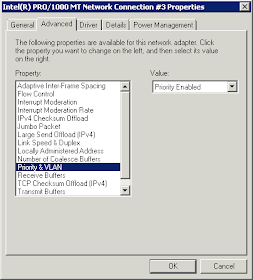Nic driver
The Network Driver Interface Specification (NDIS) is an application programming interface (API) for network interface cards (NICs). It was jointly developed by Microsoft and 3Com Corporation and is mostly used in Microsoft Windows. However, the open-source NDISwrapper and Project Evil driver wrapper projects allow many NDIS-compliant NICs to be used with Linux, FreeBSD and NetBSD. magnussoft ZETA, a derivative of BeOS, supports a number of NDIS drivers.
The NDIS forms the Logical Link Control (LLC) sublayer, which is the upper sublayer of the OSI data link layer (layer 2). Therefore, the NDIS acts as the interface between the Media Access Control (MAC) sublayer, which is the lower sublayer of the data link layer, and the network layer (layer 3).
The NDIS is a library of functions often referred to as a "wrapper" that hides the underlying complexity of the NIC hardware and serves as a standard interface for level 3 network protocol drivers and hardware level MAC drivers. Another common LLC is the Open Data-Link Interface (ODI).
The NDIS versions supported by various Windows versions are as follows:The traffic accepted by the NIC is controlled by an NDIS miniport Driver while various protocols, such as TCP/IP, are implemented by NDIS Protocol Drivers. A single miniport may be associated with one or more protocols. This means that traffic coming into the miniport may be received in parallel by several protocol drivers. For example, Winpcap adds a second protocol driver on the selected miniport in order to capture incoming packets. Furthermore, it is possible to simulate several virtual NICs by implementing virtual miniport drivers that send and receive traffic from a single physical NIC. One example of virtual miniport driver usage is to add virtual NICs, each with a different Virtual LAN. Due to the fact that implementations cannot assume that other drivers received the same buffers, one must treat the incoming buffers as read only and a driver that changes the packet content must allocate its own buffers.

No comments:
Post a Comment